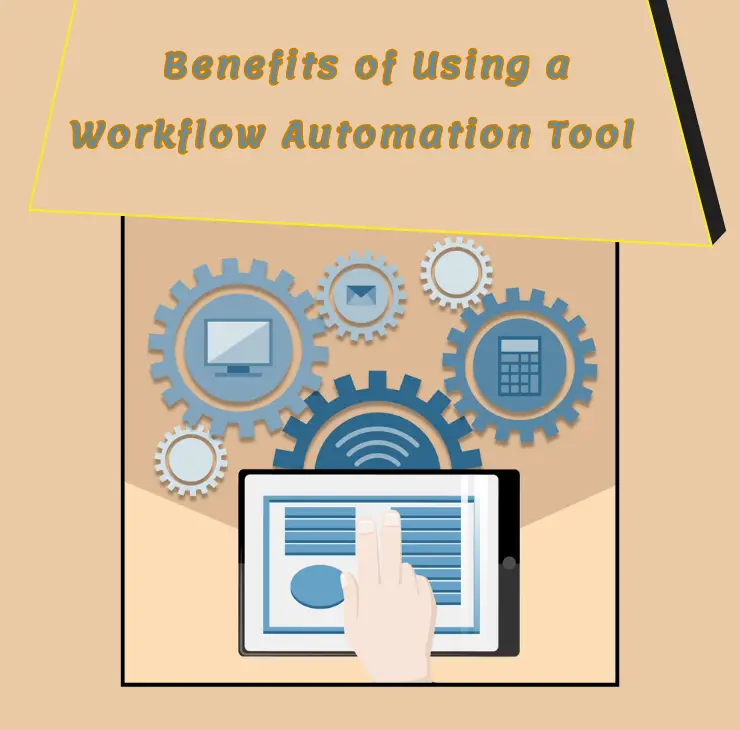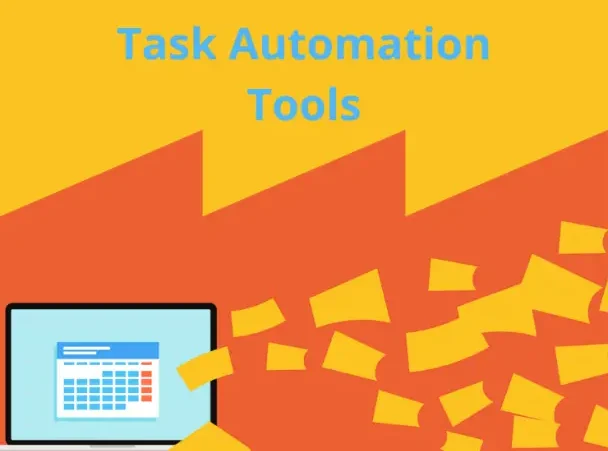Ever feel like you’re drowning in tasks? Emails piling up. Spreadsheets multiplying. Deadlines creeping closer. Yeah, we’ve all been there. The workflow automation tool— can be a game-changing solution that helps you automate repetitive tasks, improve efficiency, and focus on what truly matters.
Whether you’re a small business owner or part of a large organization, a workflow automation tool can be your secret weapon to stay ahead of the competition. But what exactly is it? How does it work? And most importantly, how can it benefit you? Let’s dive in!
What Is a Workflow Automation Tool?
 It is software designed to streamline and automate business processes. It replaces manual, time-consuming tasks with automated workflows, ensuring that tasks are completed accurately and on time.
It is software designed to streamline and automate business processes. It replaces manual, time-consuming tasks with automated workflows, ensuring that tasks are completed accurately and on time.
Think of it as a virtual assistant that handles repetitive tasks like data entry, email follow-ups, approvals, and scheduling—allowing you and your team to focus on strategic initiatives.
With this tool, you can:
- Automate routine tasks.
- Eliminate human errors.
- Improve team collaboration.
- Save time and resources.
How Does a Workflow Automation Tool Work?
At its core, it works by creating a series of predefined steps or “workflows” that trigger specific actions. For example:
1. Trigger: A new lead fills out a form on your website.
2. Action: The workflow automation tool sends an email to the lead and notifies your sales team.
3. Follow-Up: If the lead doesn’t respond within 3 days, the tool sends a follow-up email automatically.
This seamless process ensures no lead falls through the cracks and keeps your business running smoothly.
Benefits of Using a Workflow Automation Tool
Still wondering whether a workflow automation tool is worth the investment? Here are some key benefits that might change your mind:
1. Save Time and Boost Productivity
Manual tasks like data entry, invoice processing, or scheduling meetings can eat up hours of your day. By automating these tasks, you free up valuable time for more strategic work.
2. Reduce Errors
No matter how skilled your team is, humans are prone to making mistakes. Workflow automation tools ensure accuracy by following predefined rules and eliminating the risk of errors.
3. Enhance Collaboration
With automated workflows, everyone on your team stays on the same page. Notifications, approvals, and updates are sent automatically, ensuring smooth communication and collaboration.
4. Cost Savings
While there’s an upfront cost to implementing workflow automation tools, the long-term savings in time and resources make it a worthwhile investment for any business.
5. Scalability
As your business grows, managing workflows manually becomes increasingly challenging. This tool scales with your business, handling complex processes effortlessly.
Top Features to Look for in a Workflow Automation Tool
Not all workflow automation tools are created equal. When choosing one for your business, look for these must-have features:
- Ease of Use: A user-friendly interface that doesn’t require coding knowledge.
- Integration Capabilities: The ability to integrate with your existing software, like CRM or project management tools.
- Customizable Workflows: Flexibility to create workflows tailored to your specific needs.
- Reporting and Analytics: Insights into workflow performance to identify bottlenecks and optimize processes.
- Security: Robust data protection features to keep sensitive information safe.
Popular Workflow Automation Tools in 2025
Here are some of the top-rated workflow automation tools that businesses love:
 1. Zapier
1. Zapier
Zapier is perfect for connecting multiple apps and automating workflows without any coding skills. It supports thousands of integrations, making it ideal for businesses of all sizes.
2. Monday.com
Known for its intuitive interface, Monday.com offers powerful workflow automation features for project management and team collaboration.
3. Asana
Asana’s automation features help teams stay organized by streamlining task assignments, deadlines, and approvals.
4. Trello
Trello’s automation tool—Butler—simplifies repetitive tasks like moving cards or assigning members in its Kanban-style boards.
5. HubSpot
For marketing and sales teams, HubSpot’s built-in automation tools make lead nurturing and customer communication a breeze.
How to Implement a Workflow Automation Tools in Your Business
Ready to get started with workflow automation tools? Follow these steps for a smooth implementation:
1. Identify Pain Points: List the tasks or processes that are time-consuming or prone to errors in your business
2. Choose the Right Tool: Research and select the tool that aligns with your needs and budget
3. Map Out Workflows: Define the steps involved in each process you want to automate
4. Test and Optimize: Run test workflows to ensure they work as expected before rolling them out company-wide
5. Train Your Team: Provide training to ensure everyone knows how to use the tool effectively.
Real-Life Examples of Workflow Automation Success
Businesses across industries have embraced workflow automation tools to achieve remarkable results:
- E-commerce: Automating order processing and inventory updates to ensure timely deliveries and accurate stock levels.
- Marketing Agencies: Streamlining client onboarding, campaign approvals, and performance reporting for better efficiency.
- Healthcare: Simplifying patient scheduling, billing, and follow-ups to enhance patient care and satisfaction.
The possibilities are endless!
FAQs
✔ What’s the best workflow automation tool for beginners?
Zapier is **super easy** to start with. Drag, drop, automate.
✔ Can this tool replace employees?
Nope. It supports employees by cutting down on boring tasks, so they can focus on what actually matters.
✔ Is it expensive?
Depends on the tool. Some have free plans, while others charge based on features and users.
✔ What’s the easiest task to automate first?
Emails, approvals, data entry, or reminders. Simple stuff that makes a big impact.
✔ Can I set it up without coding?
Most modern tools are no-code or low-code, so yes. Just drag and drop.
In a world where time is money, investing in a workflow automation tool is no longer optional—it’s essential for staying competitive. Whether you’re looking to save time, reduce errors, or scale your operations, workflow automation has got you covered.
So why wait? Take the first step toward transforming your business today! Explore the many options available and find the perfect workflow automation tool that suits your needs. Try a Workflow Automation Tool Today!
Ready to revolutionize the way you work? Don’t let repetitive tasks hold you back any longer! Explore top workflow automation tools like Zapier, Monday.com, or HubSpot and see the difference they can make in your business.
Have questions or need help choosing the right tool? Drop us a comment below—we’d love to help you find the perfect solution! 🚀




[…] Also Read: Automation Tools […]